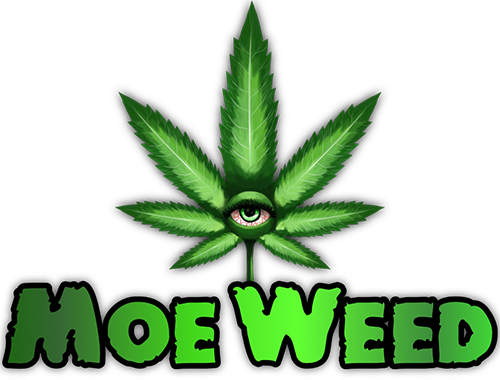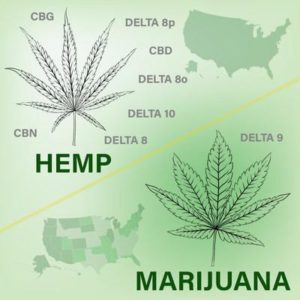CBD | Whats is it?
CBD, short for Cannabidiol, is one of many cannabinoids, or molecules produced uniquely by the cannabis family. Unlike tetrahydrocannabinol (THC, the primary psychoactive element in marijuana), CBD is non-psychoactive, meaning it doesn’t have a strong effect on cognitive brain activity and doesn’t cause the “high” associated with marijuana. As such, people are turning to CBD products to alleviate symptoms from physical ailments like pain and inflammation as well as mental ones like anxiety and depression.
When it comes to products, not all CBD products work the same. One person may require a higher dosage than another, so it is important for consumers to know how much they need according to their symptoms (it’s common to start with a low dosage and gradually increase until reaching the desired effectiveness).
Something that we can’t stress enough is research. The internet gives us a world of knowledge and it’s imperative that we conduct thorough research when experimenting with new supplements. A quick Google search on CBD will show you many articles and reports about the positive effect it’s had on a great number of people.
FULL SPECTRUM CBD
Full spectrum means that an oil or product contains all the cannabinoids that are found in the cannabis plant in nature, rather than just CBD (Cannabidiol). Full spectrum products are associated with the “entourage effect” – this refers to the increased effectiveness of these products due to the different cannabinoids working synergistically. Full spectrum products can be more effective than products that are CBD isolate derived. Products that are isolate derived will only contain the isolated CBD molecule.
So, what else are you getting with a full spectrum product besides CBD? The short answer is you are getting more than 100 different cannabinoids found in the hemp plant. CBD and THC are the most abundant cannabinoids in cannabis, but there are several minor cannabinoids that can play an important role in the effectiveness of a CBD product. Here is a list of their names and the role studies suggest they play in the human body.
CBD (Cannabidiol)
CBD is the most abundant compound in the hemp plant. Research suggests that CBD is a natural anti-inflammatory and may help promote homeostasis in the human body. Unlike THC, CBD will not give the user a “high” feeling that the cannabis plant has been traditionally known for. It is used by consumers to combat things like joint pain, anxiety, and insomnia.
THC (Tetrahydrocannabinol)
THC is the second most common cannabinoid in the hemp plant. It is also the most desired compound in hemp’s sister plant, marijuana. THC is the compound in the cannabis plant that makes the user feel “high”. Legally, the distinction between hemp and marijuana is the THC content of the plant. Anything less than 0.3% is defined as hemp, and anything over 0.3% is marijuana. While full spectrum CBD products will contain trace amount of THC, levels will always be below the 0.3% mark. In such small amounts, consumers using CBD products will not feel the psychoactive effects of the THC, it is only present to help increase the entourage effect.
Delta- 8 (delta-8-tetrahydrocannabinol)
Delta-8 is a cannabis compound that has become popular because of its similarity to delta-9 THC, the main compound in cannabis that gets you high, causing euphoria, happiness, sedation, symptom relief, and much more. Large amounts of THC are found in a majority of cannabis strains.
The similarities between the two cannabinoids lie in their chemical structures and their names. THC’s scientific name is delta-9-tetrahydrocannabinol, or delta-9 THC, or just delta-9. Delta-8 is short for delta-8-tetrahydrocannabinol, or delta-8 THC. Delta-8 THC can cause effects similar to regular delta-9 THC—but they will be much less potent.
Currently, the legality of delta-8 is hazy. It can be extracted from either hemp or cannabis. Because of the 2018 farm bill, hemp can be legally grown and used for extractions all over the United States, making delta-8 legal in states where delta-9 THC is illegal—sometimes.
Nearly all delta-8 THC on the market today is manufactured from hemp-derived CBD, which makes it, in theory at least, part of a federally legal chain of origin.
People in states where THC is illegal crave cannabis products and are now looking to delta-8 because it may be legal in their state, even though it is less potent than regular THC. Many hemp-based extractors are ramping up delta-8 production to meet this new demand and shipping it all over the US. (Leafly.com)
Delta- 9 (tetrahydrocannabinol)
Delta-9 THC or tetrahydrocannabinol is the cannabinoid most commonly associated with cannabis and marijuana. Don’t confuse cannabis and hemp plants, though they do come from the same family they do have a different cannabinoid structure. It contains psychoactive properties through its interaction with the ECS but has been thought to host a range of potentially therapeutic properties for some consumers. Nonetheless, with its therapeutic properties being used more regularly and widely, delta-9 THC is most known for its ability to get people “high,” there can be some unwanted side effects. Some cannabis users have no adverse side effects, but some have reported increased anxiety or paranoia. Delta-9 may not be right for you, but delta-8 could offer a solution to those unwanted side effects with its decreased psychoactive capabilities.
THC-O
Although many of us only recently heard about THC-O, the US military began studying its effects as long ago as 1949; they observed it eroded dogs’ muscle coordination twice as much as conventional delta-9 THC.
Typically, acetic anhydride is added to delta-8 THC to produce delta-O acetate.
THC-O didn’t appear on the DEA’s radar until nearly 30 years later. In 1978, DEA agents discovered a clandestine lab in Jacksonville, Florida, had combined a cannabis extract with acetic anhydride. But over the following 10 years, THC-O did not enter the illicit market. Since it didn’t seem to be a growing problem, the federal drug agency declined further investigation into the unusual compound.
Today the production of THC-O acetate is raising concern among some in the state-licensed cannabis industry. To generate the molecule, a highly-flammable compound called acetic anhydride is added to THC molecules. The process involves a series of extractions that begin with hemp, the low-THC cannabis plant that was made federally legal by Congress in the 2018 farm bill. First, CBD is extracted from raw hemp. Then delta-8 THC is extracted from the CBD. Finally, acetic anhydride is added to the delta-8 THC molecules to make THC-O acetate. (Leafly.com)
HHC
HHC was first created in 1944 by the American chemist Roger Adams, when he added hydrogen molecules to Delta-9 THC. This process, known as hydrogenation, converts THC to hexahydrocannabinol (HHC).
Hydrogenation isn’t limited to cannabinoid production. A similar process is used to convert vegetable oil to margarine.
While Adams created HHC from conventional cannabis-derived THC, these days the cannabinoid is typically derived through a process that begins with hemp, the low-THC cannabis plant that was made federally legal by Congress in the 2018 farm bill.

